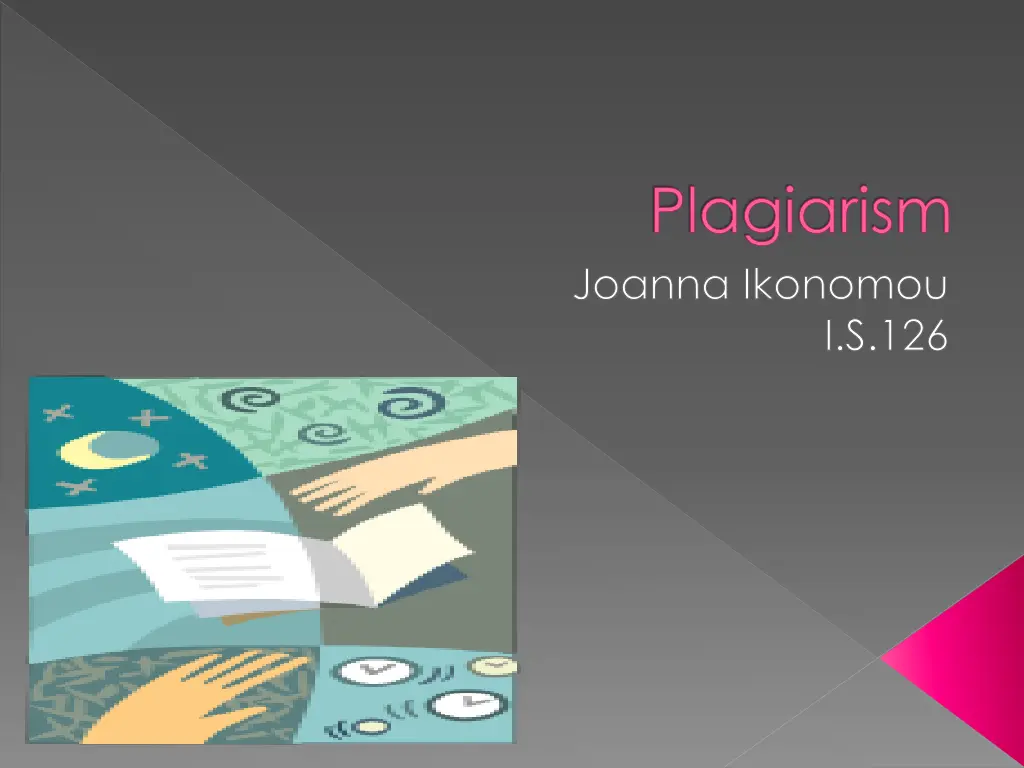
Steps to Address Plagiarism Issues in Schools
Learn about the six important steps, from defining the social problem to evaluating existing policies, for addressing the rampant issue of plagiarism in schools. Explore causes, evidence, and solutions to combat this academic dishonesty effectively.
Download Presentation

Please find below an Image/Link to download the presentation.
The content on the website is provided AS IS for your information and personal use only. It may not be sold, licensed, or shared on other websites without obtaining consent from the author. If you encounter any issues during the download, it is possible that the publisher has removed the file from their server.
You are allowed to download the files provided on this website for personal or commercial use, subject to the condition that they are used lawfully. All files are the property of their respective owners.
The content on the website is provided AS IS for your information and personal use only. It may not be sold, licensed, or shared on other websites without obtaining consent from the author.
E N D
Presentation Transcript
Plagiarism Joanna Ikonomou I.S.126
PPA (Public Policy Analyst) 6 Important Steps Step 1: Defining the social problem Step 2: Gathering Evidence of the problem Step 3: Identifying the causes of the problem Step 4: Evaluating existing public policies Step 5: Developing public policies solution Step 6: Selecting the best public policy solution
Step:1(Defining the social problem) Plagiarism is a huge problem in schools today.
Definition of Plagiarism Plagiarism : to steal and pass off (the ideas or words of another) as one's own : use (another's production) without crediting the source : to commit literary theft : present as new and original an idea or product derived from an existing sourcehttp://www.merriam- webster.com/dictionary/plagiarize
Step 2: (Gathering Evidence of the problem) Info. from : The New York Times Article Plagiarism Lines Blur for Students in Digital Age Now we have a whole generation of students who ve grown up with information that just seems to be hanging out there in cyberspace and doesn t seem to have an author, said Teresa Fishman, director of the Center for Academic Integrity at Clemson University . In surveys from 2006 to 2010 by Donald L. McCabe, a co- founder of the Center for Academic Integrity and a business professor at Rutgers University, about 40 percent of 14,000 undergraduates admitted to copying a few sentences in written assignments . The main reason it occurs is because students leave high school unprepared for the intellectual rigors of college writing . http://www.nytimes.com/2010/08/02/education/02cheat.ht ml?pagewanted=all&_r=0
Step 3: Identifying the causes of the problem Students do not know how to correctly site sources. It is becoming easier for students to copy and paste because of the internet. Poor writing skills. Poor researching skills.
Step 4: Evaluating existing public policies Plagiarism is not acceptable. If you are caught plagiarizing you will have to fix your paper AND have 10 points taken off your assignment grade.
Step 5: Developing public policies solution Document your sources using MLA format. DO NOT COPY ANYTHING THAT YOU DID NOT WRITE WITHOUT CORRECTLY CITING IT.
MLA FORMAT http://owl.english.purdue.edu/owl/resource/747/01/ General Guidelines The source information required in a parenthetical citation depends (1.) upon the source medium (e.g. Print, Web, DVD) and (2.) upon the source s entry on the Works Cited (bibliography) page.
BIBLIOGRAPHY PAGE http://owl.english.purdue.edu/owl/resource/747/08/ (AUTHORS) Lastname, Firstname. Title of Book. City of Publication: Publisher, Year of Publication. Medium of Publication.
ELECTRONIC SOURCES http://owl.english.purdue.edu/owl/resource/747/08/ Author and/or editor names (if available) Article name in quotation marks (if applicable) Title of the Website, project, or book in italics. (Remember that some Print publications have Web publications with slightly different names. They may, for example, include the additional information or otherwise modified information, like domain names [e.g. .com or .net].) Any version numbers available, including revisions, posting dates, volumes, or issue numbers. Publisher information, including the publisher name and publishing date. Take note of any page numbers (if available). Medium of publication. Date you accessed the material. URL (if required, or for your own personal reference; MLA does not require a URL).
Step 6: Selecting the best public policy solution HOW CAN YOU AVOID PLAGIARISM? Make a list of 5 things you can do to avoid plagiarism.
